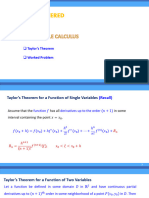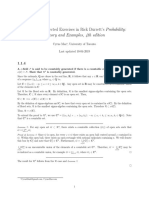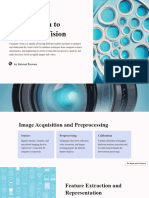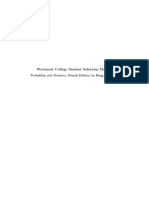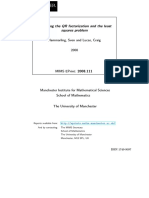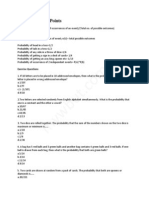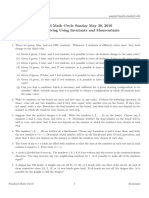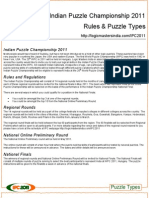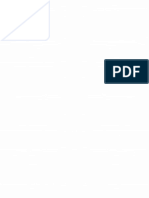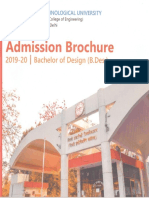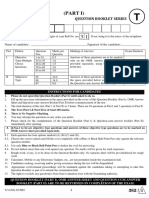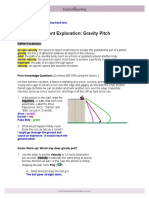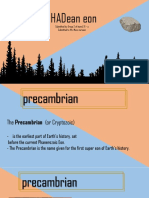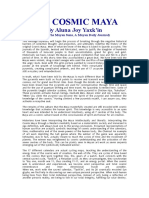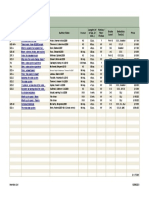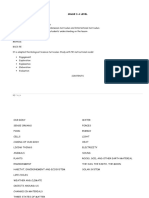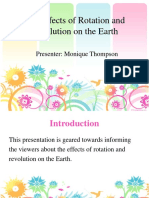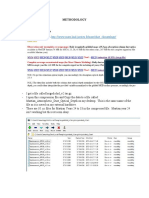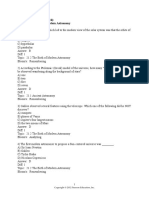0% found this document useful (0 votes)
414 views4 pagesGeometry and Logic Challenges
The document contains 10 geometry and logic puzzles involving arrangements of objects like toothpicks, pennies, and knights on a chessboard. Problem 1 asks how to determine which of two doors leads to freedom using one question to a sentry that always lies or tells the truth. Problem 2 asks how to arrange toothpicks to form four squares of equal size by moving two toothpicks. Problem 3 asks if six pencils can be arranged to touch each other and how it can be done.
Uploaded by
Tushar WaliaCopyright
© © All Rights Reserved
We take content rights seriously. If you suspect this is your content, claim it here.
Available Formats
Download as PDF, TXT or read online on Scribd
0% found this document useful (0 votes)
414 views4 pagesGeometry and Logic Challenges
The document contains 10 geometry and logic puzzles involving arrangements of objects like toothpicks, pennies, and knights on a chessboard. Problem 1 asks how to determine which of two doors leads to freedom using one question to a sentry that always lies or tells the truth. Problem 2 asks how to arrange toothpicks to form four squares of equal size by moving two toothpicks. Problem 3 asks if six pencils can be arranged to touch each other and how it can be done.
Uploaded by
Tushar WaliaCopyright
© © All Rights Reserved
We take content rights seriously. If you suspect this is your content, claim it here.
Available Formats
Download as PDF, TXT or read online on Scribd
/ 4


















